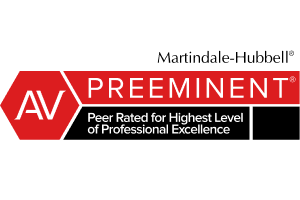Raising the Standard of Settlement Negotiations With Written and Visual Demand Presentations
The Art of Settlement. Now more than ever, cases are settling in greater numbers instead of going to trial. This is in part due to the development and sophistication of mediation and other methods of alternative dispute resolution. The effort that was used to prepare for trial has been redirected to creating new and innovative methods of settlement negotiations. Attorneys must now find new ways to make their client’s claim stand out from the large stack of papers and files which cover the insurance adjuster’s desk. Pleading your client’s case in settlement negotiations has become a competitive art which takes shape in the form of a demand presentation.
Demand Presentation. A demand presentation is simply your demand for settlement put together in a “packaged” form. An effective demand presentation should address the following six subjects :
1. Your Client. Information about your client should be at the core of every demand presentation. It is your opportunity to convey the humanity of your client and show that he or she is more than a formula or statistic on paper. As you have a working relationship with the client, you have access and control over information and details that you do not have over any other aspect of you case. Use this opportunity to its fullest.
2. The Defendants. The demand presentation is your opportunity to let the defendants know how much you know about them. Surprise them with the depth of your knowledge. It will go a long way.
3. Liability. The liability portion of your demand presentation is where you essentially make your case. The key is to simplify a complicated theory of liability. Show the adjuster that any jury in the world could clearly understand what happened to your client.
4. Medicals. Oftentimes, the medical aspect of a case is the most technical element. Understanding the medical aspect behind the injury is a challenge second only to explaining it in a demand. The key is to simplify and to explain it in as much plain language as possible. Be sure, however, to communicate that you have mastered an understanding of your client’s medical condition.
5. Damages. Particular attention should be paid to the damages portion of your demand presentation as this is where the author and the reader are bound to differ. It is your job to convince the adjuster that your demand is reasonable in lieu of the damages that your client must now live with.
6. The Future. Beyond communicating your client’s injuries and damages, your demand presentation should convey what type of future your client should expect.
A demand presentation is by nature a persuasive product and as with a trial, the more work and imagination put into it, the more effective it is. Demand presentation can be divided into two distinct categories:
1. Print. Print demand presentation utilize standard print formats and are what most attorneys prepare when creating demand presentations: narrative description, photos, charts, graphs, etc.
2. Media. Demand presentations which involve media are not as common and are oftentimes the most compelling way to make your case. Media demand presentations include such items as video settlement tapes.
The Importance of Demand Presentations. In the hurricane of paper piled on top of an insurance adjusters desk, the impact of a well prepared demand presentation should not be underestimated. A properly prepared demand presentation should:
1. Inform. Inform the adjuster or defendant about the case. A demand presentation should tell a complete and compelling story. It should, of course, highlight all of the strong points of your case while anticipating and defusing the negative aspects.
2. Persuade. The goal of a demand presentation should be to persuade the adjuster that there is the potential for exposure should the case go to trial.
3. Motivate. A demand presentation should also motivate the adjuster to settle the case instead of accepting the risk of exposure.
Even if a settlement seems unlikely, preparing a demand presentation is still an effective method of fine tuning and focusing your case for trial.
The Economic Considerations of Demand Presentations. An innovative demand presentation does not have to be expensive to be effective. Whether you choose to use a print demand presentation or a media demand presentation, there are cost effective options which will help make your demand stand out above the rest. Some of those options are detailed below.
Demand Presentation
A. Finding What Works. The innovative boundaries of print demand presentation are only limited by the author’s imagination and willingness to experiment. The challenge is to find what is the most effective means for telling your client’s story. There will be times when a demand presentation with impressive graphics, charts, etc, will be most persuasive. One must always be aware, however, that sometimes less is more. A few well chosen pictures and a compelling narrative may be all that is necessary to motivate an adjuster. Overdoing a demand with too much flash may actually devalue an already compelling case by distracting away from the human story involved. The key is to find what works. The following paragraphs contain some specific suggestions for your next print demand presentation. They have been divided into the six subjects which every demand should address:
1) your client;
2) the defendants;
3) liability;
4) medicals;
5) damages;
6) the future.
B. Your Client. It is certainly to your advantage to gather as much information about your client as possible. Have a bulk of information to choose from when putting your presentation together. Remember to ask for things early on in the case. Here are some items to ask for that you might want to consider putting in your print demand presentation:
1. Photographs. Never underestimate the potential power of a photograph. They truly can be worth a thousand words. Laser-copied enlargements of color photos of your client in the demand presentation can humanize your client. It gives the adjuster a feeling that he/she is dealing with an actual person. In choosing photos, pick ones which show your client in action and enjoying life. Also, be sure to show a range of photos from birth through periods of life like marriage and other milestones, like having children. You may also want to include photos of your client’s home, workplace, relatives, etc.
2. Personal Achievements/Awards. You may wish to include information about your client’s personal achievements. Attach copies of any awards, degrees, newspaper articles, certificates, and honors that you client has received or been the subject of.
3. Narratives. A narrative description of the events that your client has had to endure can be a powerful tool. This narrative may be written by your client, relatives, survivors, or friends. You could even use a combination thereof.
C. The Defendant. Here are some items regarding the defendants that you may want to consider putting in your demand presentation:
1. Corporate Information. If your defendant is a corporation, you may want to include corporate information about them. A copy of a publicly traded defendant’s SEC filings in which they are boasting about earnings can get some attention. Corporations love to boast about all kinds of things in their advertisements, web pages, brochures, etc. Use their own words against them.
2. Prior Lawsuits. If you have a defendant with similar prior lawsuits, you should be sure to include them in your demand presentation. You may even want to include a copy of the cover page of the complaint if relevant. This is particularly effective against a defendant doctor in a medical malpractice suit.
D. Liability. Here are some suggestions for packaging your theory of liability in a print demand presentation:
1. Demonstrative Aids. As with a trial, the use of demonstrative aids to explain the liability portion of your demand presentation can be useful. Charts, graphs, tables, building plans, etc., can help explain and simplify difficult concepts. Example: This graph was scanned and used in a demand to assist in understanding the path of a bullet.
2. Photographs. Photographs can be effective in demonstrating liability as well. A picture of an unobstructed stop sign is compelling with a defendant claiming the stop sign was obstructed. Be sure to always request any photos that may have been taken by the investigating officers at an accident scene.
3. Accident/Incident Reports. You may wish to include a copy of any favorable accident or incident reports that you have been able to obtain. The assessment of blame from an investigating third party will gain attention.
4. Statements. Include favorable statements or affidavits from witnesses.
E. Medicals. Understanding the medical aspects behind your client’s injury is a challenge second only to explaining it in a demand. The key is to simplify and to explain it in as much plain language as possible. Experimenting with innovative approaches in explaining your client’s medical condition is recommended. Here are some suggestions:
1. Medical Records. It is a basic rule to include at least the narrative reports from your client’s treating physician detailing their injury. This, however, is not usually enough as the narrative report is laced with medical terminology. Include a plain language description of the terms and diagnosis. Simplification goes a long way.
2. Demonstrative Aids. You may wish to include charts, graphs, drawings, photographs, etc., which explain the mechanism of your client’s injury. A color drawing of a herniated disc demonstrates what could take a page of text to explain. If you plan to use x-rays to show a broken bone, consider coloring in the fracture. It will emphasis the injury.
F. Damages. Particular attention should be paid to this portion of your demand presentation. You must overwhelm the reader with the enormity of your client’s damages whether it is a soft tissue case or a catastrophic injury. Be aware, however, that this can be accomplished by letting the case speak for itself. Pushing too hard may actually devalue the impression of damages. Here are some innovative ways to convey your client’s damages:
1. Photographs. Photographs are especially effective here because they graphically depict the extent of damages in a case and are sure to give the adjuster a greater sense of the loss. Move beyond the obvious photos such as those of the client’s injury and be creative. Include photos of rescue efforts, the wrecked vehicle, etc. Be very selective in which photos you use. A photograph selected in poor taste could make the adjuster reluctant to negotiate the case.
2. Medical Bills. Juries will often measure a client’s non-economic damages by the amount of their economic losses. Adjusters will do the same. Include photocopies of the medical bills received by your client.
G. The Future. Take the opportunity to tell the story of your client’s future in your demand presentation. Here are some suggestions:
1. Narratives. Utilize your client to tell their own story in the form of a narrative. Have him or her describe a day in their life.
2. Experts. Don’t hesitate to use experts to describe what your client has to endure in the future. Psychiatrists and grief experts can be useful when dealing with a wrongful death.
Media Demand Presentations
A. Generally – Like print demand presentations, media demand presentations should also inform, persuade and motivate the adjuster who is viewing it. With a media demand, however, you have many more persuasive tools at your disposal. The following paragraphs contain some specific suggestions about the tools you can use in your next media demand presentation. They too have been divided into the six subjects which every demand should address:
1) your client;
2) the defendants;
3) liability;
4) medicals;
5) damages; and
6) the future.
B. Your Client. Here are some things that you may want to video tape for your media demand presentation to help convey information about your client:
1. Photographs – Video taped footage of your client’s photographs, with a voice-over explaining the photos, is a powerful way to convey information about your client. The photos you choose to video tape should show your client doing things he/she enjoyed. You may also want to include video footage of the accident site, as well as your client’s home and workplace. Note: Be careful when deciding who to pick to do the voice-over for the photos. You may want to do it yourself, or a narrator might be better. You may also want to consider whether the voice-over should be male or female. The details of your case should control the outcome of these decisions. Whatever you decide, your video taped pictures with a voice-over will help to humanize your client in the adjuster’s eyes.
2. Video. With the popularity of hand held camcorders, it is more than likely that your client will have videotape of themselves or of the decedent prior to the injury or accident. This can be a powerful item that is often overlooked.
3. Interviews. A video taped interview of your client’s family and friends is another good way to convey information about your client in a media demand presentation. When you tape these interviews, remember that you are trying to get details about your client which both add interest and distinguish him/her from the vast tide of mankind. Choose the background of these interviews carefully. If you are interviewing family, the appropriate background setting is probably at home.
C. The Defendant. Here are some items regarding the defendants that you may want to consider putting in your demand presentation:
1. Television Commercials. When watching T.V. or listening to the radio, always be on the lookout for a bragging defendant. You never know where you are going to find the perfect piece of evidence. It may be through discovery or it may be during a commercial break on Seinfeld. We recently used a videotape of a commercial in a case against Ripley’s Believe it or Not. Ripley’s contended that no one could ever loose their footing on a particular collapsing bridge. The commercial however, provided a nice contradiction as it showed a patron falling on the collapsing bridge.
2. Web Pages- Always check to see if your corporate defendant website. If they do have a website, and if there is anything useful, you may want to videotape someone navigating the page.
D. Liability- Here are some suggestions for packaging your theory of liability in a media demand presentation:
1. Deposition Excerpts. If you take video taped depositions of adverse witnesses, you may very well have statements on tape of them conceding critical points. Putting these clips in your demand presentation could be very persuasive to the adjuster evaluating your case. Be sure to include just the necessary footage of the deposition so that you make your point quickly.
2. Voice Recordings. In some cases, powerful audio recordings exist which help to highlight the liability of defendants. Cockpit Voice Recordings provide the best example. The recovered CVR from the crash of American Airlines Flight 965 in Cali, Colombia revealed the chilling fact that the pilots were flying in mountainous terrain completely off course and lost. Listening to the recording, as opposed to reading the transcript brings an extra dimension to the liability analysis. In the case of Flight 965 a cavalier attitude in the pilots’ voices is evident in the recording that would not be evident from the written transcript.
3. Computer Animation. When catastrophic event is described on paper, it may seem very complicated. Watching, a computer-generated reconstruction of the event will help to simplify the matter tremendously. For example: TWA Flight 800. Actually seeing a reconstruction of the accident may also help the adjuster keep a better perspective of what really happened.
E. Medicals. Here are some suggestions in your approach to medicals in your media demand presentation:
1. Doctor Interviews. Put excerpts of a video interview of your expert doctor in your media demand presentation. Use either treating physicians, experts, or both. It will be helpful for the adjuster to see that your position is supported by an expert.
2. Computer Animation. Use computer animation to explain the mechanism of a complex injury.
F. Damages. You can include video footage of the following items in your media demand presentation to convey the enormity of your client’s damages. For all of the items listed below, a voice-over could more fully explain what the video taped images are, and why they are significant.
1. Piles of Medical Bills. When an adjuster actually sees images of all the medical bills your client has incurred, the damages become much more real.
2. Newspaper Articles. If newspaper articles exist which describe the accident, video taped footage of them may be useful to convey information about damages. An accident that is severe enough to be newsworthy gives the adjuster a greater sense of the enormity of the loss.
3. Television Excerpts. Similar to video footage of newspaper articles, footage of newscast excerpts also gives the adjuster a sense that your client’s loss was significant enough to be newsworthy. If your client’s loss was that important, the adjuster is likely to think that there must be some large damages as well.
G. The Future. Take the opportunity to tell the story of your client’s future in your demand presentation. Here are some suggestions:
1. Create a “Day in the Life” Video – These videos can show the adjuster how your client currently lives. If your client is currently living an especially difficult life, as is often the case with severely injured persons, these videos can be especially compelling.
H. Special Considerations When Preparing a Media Demand Presentation
1. Choosing the Media. Always take care to pick which type of demand presentation works best for your case. You may want to use a combination of both. Send a print demand presentation with a videotape or disc of pertinent material.
2. Work with a Technician. If you choose to work with a media demand presentation, you will want to work with a professional. Quality is important and you do not want your case to reflect badly because of poor editing. Be sure to choose a technician who is nearby, has a good reputation and has the right equipment. Of course, you also want to choose a technician who is affordable.
3. Work as a Team. Get other people involved in the project. It is a good idea to have a meeting with the whole team of people who will be working on the video settlement tape with you (attorneys, paralegals, the video technician) to make sure that everybody is working together to a definable goal. You may want to have periodic meetings with your team to evaluate the development of the tape.
4. Learn the Techniques. The better informed you are as to the technical aspects of making a media demand presentation, the better the product. Have your video technician teach you video techniques. You may prefer the use of some over others. You should understand that various techniques involve: dissolve, fade to black, freeze, roll-over, posterize and use graphic generators. You should also understand that there are a variety of ways to move visual images on and off the screen. You can: pull off, pull out, push off, push on, do a corner wipe, do a center wipe, do a side roll. Make sure your demand has technical variety. You want to prevent the viewer from being bored, so you should change the momentum of the tape to maintain viewer interest. Be careful when doing this as you want the client to be the focus of the tape, not special effects.
5. Script Writing. A media demand presentation must still be written. Do a careful review of all research and resources before you and your team begin. Determine the method of narration (i.e., chronological, flashback from date of accident, flashback from present, etc.). Also determine the length of the demand. Longer is not necessarily better. As with all good writing, be sure to write a strong introduction and conclusion. The laws of recency and primacy dictate that the viewers will most remember what was said first and last. Make sure the text is clean, crisp, and well-written.
6. Edit Edit Edit. Editing is critical to any creative project. The creation is sometimes in the edit. Do not be afraid to cut aggressively. Make every moment count. Be sure that you are the director of this tape.







